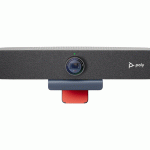poly RMX 1800 RealPresence Collaboration Server
Basic Setup
Before installing the system and performing the basic setup, please read the Important Safeguards described in the Polycom RealPresence Collaboration Server 1800 Hardware Guide. For a detailed description of unpacking and rack mounting instructions, see the Polycom RealPresence Collaboration Server 1800 Hardware Guide.
| Button/LED | Description |
| ON/OFF button | Power the RealPresence Collaboration Server 1800 System on or off |
| LAN 1 LED |
Off – No network connection Green – Network connected Flickering green – In use |
|
LAN 2 LED |
Off – No network connection Green – Network connected Flickering green – In use |
|
STATUS LED |
Red – System alarms Green – Endpoints are connected to a meeting Flickering green – No system alarms and no endpoints connected to the meeting Flickering blue – Diagnostic tests are running Blue – Diagnostic tests are completed. Remove the USB key (if applicable) and restart the system |
|
M/S LED |
Blue – System upgrade completed, waiting for reboot Flickering blue – System upgrading in progress
Green – The system works normally, either in single mode or as the master MCU in the hot backup mode Flickering green – The system works normally, as the slave MCU is in the hot backup mode |
| Button/LED | Description |
| PWR LED | Green – Power normal Red – Power alarms |
Connecting the Cables to the RealPresence Collaboration Server 1800 System
- Insert the power cable into the power connector on the rear panel of the system.
- Connect the Management Network cable to LAN 1 port.
- Connect the media and signaling cable to LAN 2 port.
Configuring the LAN Properties on the USB Key
- Insert the USB key provided with your system into the PC workstation.
- The Polycom RealPresence Collaboration Server(RMX) Documentation Library & Initial Setup Tools window opens.
- Select Open Folder to view files using Windows Explorer.
- Double-click the index.a file.
The Language Menu opens
- Select the documentation language.
- In the Polycom End User License Agreement window, click the Accept Agreement button.
- In the Product Type Selection window, click the RealPresence Collaboration Server 1800 hyperlink.

- Click LAN Configuration Utility.
- The LAN Configuration Utility dialog box opens.
- Modify the parameters in the utility’s dialog box using the information supplied by your network administrator.
- Click OK.
- Remove the USB key from the PC.
First-time Power-up and Connection to MCU
- Insert the USB key containing the modified IP addresses into either of the USB ports on the RealPresence Collaboration Server 1800 system’s back panel.

- Power the system ON.
- The PWR LED is lit.
- The system power-up sequence may take approximately five minutes.
- In your network browser, enter the IP address of the RealPresence Collaboration Server 1800 system’s Control Unit and press Enter.

- After the Welcome screen is displayed, remove the USB key from the system.


Initial System Configuration
This section describes the definition of H.323 Network Service, setting the system time, modifying the default Administrator user and setting basic system flags. For detailed description of H.323 and SIP definitions, see the RealPresence Collaboration Server 1800 Getting Started Guide, “First Time Installation and Configuration”. In the Fast Configuration Wizard, select Next to move from one window to another.
- Configure signaling and media network IP address.

- Configure the router for signaling and media network.

- Configure DNS settings.

- In the IP Network Type, select H.323, SIP, or H.323 & SIP.
- Configure the H.323, if applicable.

- Configure SIP settings, if applicable.

- Configure RMX time.

- Configure an administrator user.

- Configure system flags.

- Click Save & Close.
- In the Success Message box confirming successful configuration, click OK.
- In the Reset Confirmation dialog box, click Yes.
- In the Please wait for the system reset message box, click OK. A system restart may take up to five minutes.
- Refresh the browser periodically until the Login screen is displayed and log in. In the Main Screen, an MCU State indicator displays the time remaining until the system start-up is complete. When the default system User is replaced and the system Time is set and if there are no System Errors, the green STATUS LED on the system’s front panel turns ON.
Connecting to a Conference Directly or via Entry Queue
The RMX is shipped with pre-configured default conferencing entities that can be used to dial in and start conferences. Default (Transit) Entry Queue ID: 1000, default Meeting
Room IDs: 1001, 1002, 1003, and 1004.
H.323 Participants
Dial: [MCU Prefix in Gatekeeper][Conference or Entry Queue ID/Name] For example, if the MCU prefix in the gatekeeper is 925, enter 925 or 9251000 to connect to the EQ or 9251001/2/3/4 to connect directly to the conference. When connected to the EQ, enter the destination Meeting Room ID (i.e. 1001, 1002, 1003 or 1004). Alternatively, use the EQ or conference name. For example, if the conference name is Maple_Room, the participant can dial: 925Maple_Room.
SIP Participants
Dial: conference_routing _name@domain_name. The conference routing name must be registered with the SIP server. For example, enter 1001@polycom.com if the conference routing name is 1001 and the domain name is polycom.com.
Conference Control Using DTMF Codes
| Operation | DTMF String |
| Mute My Line | *6 |
| Unmute My Line | #6 |
| Play Help Menu | *83 |
| Change To Chairperson | *78 |
| Request private assistance | *0 |
| Request assistance for conference | 00 |
Documents / Resources
 |
poly RMX 1800 RealPresence Collaboration Server [pdf] User Guide RMX 1800, RealPresence Collaboration Server, RMX 1800 RealPresence Collaboration Server |
 |
poly RMX 1800 RealPresence Collaboration Server [pdf] User Guide RMX 1800 RealPresence Collaboration Server, RMX 1800, RealPresence Collaboration Server, Collaboration Server, Server |





